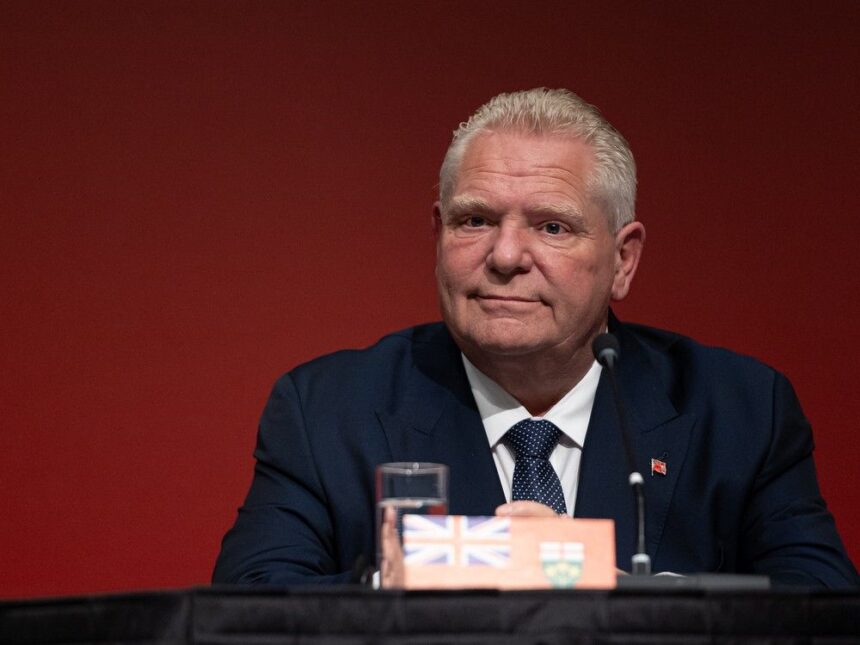In an unprecedented show of interprovincial solidarity, Canada’s premiers gathered in Toronto yesterday for an emergency summit focused on mounting a unified response to the looming threat of American tariffs. The high-stakes meeting, convened by Ontario Premier Doug Ford, marks a critical moment as provincial leaders set aside regional differences to safeguard Canada’s economic interests against increasingly protectionist U.S. policies.
“We cannot afford to be divided when our largest trading partner is taking aim at Canadian industries,” Ford told reporters at the conclusion of the six-hour closed-door session. “Today, we’ve agreed to speak with one voice—a voice that demands respect for our integrated North American supply chains and the millions of jobs that depend on them.”
The summit comes in direct response to Washington’s announcement last week of potential new tariffs targeting Canadian steel, aluminum, and automotive exports—sectors that collectively employ over 400,000 Canadians across multiple provinces. According to CO24 Business analysis, these tariffs could reduce Canada’s GDP by an estimated 0.8% within the first year of implementation.
Quebec Premier François Legault, whose province stands to lose approximately 75,000 manufacturing jobs if the tariffs proceed, emphasized the need for immediate action. “This is not about politics or provincial jurisdictions. This is about protecting Quebec workers, Ontario workers, Alberta workers—all Canadian workers. We have instructed our trade ministers to develop a coordinated retaliatory framework should these tariffs be implemented.”
The premiers’ unified approach represents a significant departure from historical interprovincial trade tensions. British Columbia’s Premier David Eby acknowledged this shift, noting that “the threat from abroad has accomplished something remarkable—it has brought together provinces that have often competed rather than cooperated on economic matters.”
In a concrete demonstration of this new cooperation, the premiers signed the “Toronto Declaration on Trade Defense,” establishing a rapid-response mechanism that allows provinces to coordinate counter-measures within 48 hours of any new U.S. trade action. The declaration also commits provinces to removing internal trade barriers that have long fragmented the Canadian market.
“We’re finally addressing the elephant in the room,” said Alberta Premier Danielle Smith. “How can we demand fair access to American markets when we maintain barriers between our own provinces? The elimination of these internal obstacles will strengthen our position internationally while benefiting Canadian consumers through increased competition.”
Federal Trade Minister Mary Ng, who attended as an observer, praised the provincial initiative while reiterating Ottawa’s ongoing diplomatic efforts in Washington. “The federal government welcomes this provincial coordination. It strengthens Canada’s hand when we can show American negotiators that our response will be swift, proportional, and nationally unified.”
Economic analysts at the CO24 News desk note that the timing of this summit is particularly significant given the approaching U.S. presidential election, with both major American parties embracing increasingly protectionist rhetoric. The premiers’ preparation strategy includes contingency plans for multiple election outcomes, recognizing that Canada-U.S. trade tensions may persist regardless of which party controls the White House.
Perhaps most notably, the declaration includes a commitment to diversify provincial trade relationships beyond the United States. Saskatchewan Premier Scott Moe highlighted his province’s growing exports to Asian markets: “While the U.S. will always be our largest trading partner, we’re accelerating efforts to build alternative export pathways, particularly for agricultural products and resources.”
The premiers will reconvene in six weeks to assess progress on internal trade barrier reduction and to review provincial readiness for potential U.S. tariff implementation. A joint provincial trade mission to key American manufacturing states is also being organized for September, targeting regions where Canadian supply chains support significant U.S. jobs.
As Canada faces this pivotal moment in its trade relationship with the United States, the question remains: will this newfound provincial unity endure beyond the immediate crisis, or will regional economic interests eventually reassert themselves once the external threat subsides?











